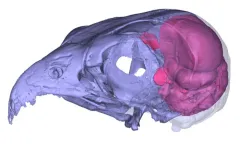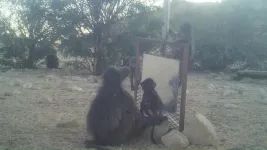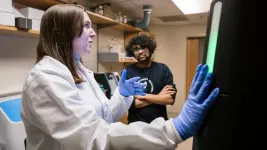(Press-News.org) Living with persistent poverty and/or parental mental illness throughout childhood may double the risk of carrying and/or using a weapon and getting on the wrong side of the law by the age of 17, suggests research published online in the Journal of Epidemiology & Community Health.
These factors may account for nearly 1 in 3 cases of weapon use or carriage and more than a quarter of all police contact among 17 year olds, nationwide, estimate the researchers.
Youth crime and violence are common around the world, they note. In England and Wales, for example, around 104,400 first-time offenders were recorded in the criminal justice system in 2020, with 11% of them aged between 10 and 17.
As risk factors tend to cluster, the researchers set out to assess the extent to which early life exposure to poverty and family adversities might be associated with involvement in youth violence, crime, and contact with the justice system.
They drew on long term data from the representative UK Millennium Cohort Study for 9316 children whose exposure to family adversities and household poverty had been reported from birth to the age of 14.
When they were 17 the teens were asked, via questionnaire, if they had carried or used a weapon, such as a knife, and/or had been in contact with the police, to include being stopped and questioned, given a formal warning or caution, or being arrested.
The overall prevalence of weapon use/carriage was just over 6%, while that of police contact was 20%.
Analysis of the data showed that exposure to poverty and family adversity throughout childhood, either singly or combined, significantly increased the likelihood of violence and criminal justice involvement during their teenage years.
Nearly 1 in 10 (just under 9%) of the teens exposed to persistent poverty and poor parental mental health throughout childhood said they had carried or used a weapon while more than 1 in 4 (28%) of them had come into contact with the police.
This compares with 5% and just over 17%, respectively, of those who had not grown up in this environment.
Overall, those who had been exposed to persistent poverty and poor parental mental health throughout their childhood were twice as likely to carry/use a weapon and to report contact with the police, after accounting for potentially influential factors, including the mother’s ethnic background and educational attainment.
And as teens, they were more than 5 times as likely to be arrested or taken into police custody, 3 times as likely to be warned or cautioned by the police, and twice as likely to be stopped and questioned by them.
Based on these figures, and population estimates, the researchers estimate that persistent poverty and family adversities account for around a third (32%) of all cases of weapon use/carriage and nearly 1 in 4 (23%) cases of contact with the police among 17 year olds across the UK.
This is an observational study, and as such, no firm conclusions can be drawn about cause and effect. And the researchers acknowledge that there might have been other as yet unaccounted for influential factors.
But they write: “Our analysis provides strong evidence that persistent adversity throughout childhood is strongly associated with risk of involvement in violence and contact with police in adolescence, highlighting the negative effects of both accumulation and duration of childhood adversity.”
And they conclude: “Our findings suggest the need for a whole system approach and the implementation and strengthening of national and local policies focused on early intervention and support for families with low incomes and those experiencing family adversity, such as mental health problems.
“Addressing these issues comprehensively and syndemically earlier in the life course across multiple sectors, such as schools, communities, healthcare providers, and the law system, may reduce risk-taking behaviours in adolescence, ultimately contributing to better outcomes for young people.”
END
Childhood poverty and/or parental mental illness may double teens’ risk of violence and police contact
These kids more likely to carry/use weapons and get on wrong side of the law by age of 17. Factors may explain nearly third of UK teen weapon issues + quarter of police contact cases
2025-01-22
ELSE PRESS RELEASES FROM THIS DATE:
Fizzy water might aid weight loss by boosting glucose uptake and metabolism
2025-01-22
Fizzy water might aid weight loss by boosting blood glucose uptake and metabolism—the rate at which the body uses and converts energy—but the effects are so small, drinking it can’t be relied on alone to shed the pounds, concludes a brief analysis published in the open access journal BMJ Nutrition Prevention & Health.
There are no quick fixes to slimming down and keeping off the weight, says the author: regular physical activity and a healthy balanced diet are still essential, added to which the long term effects of drinking large amounts of carbonated water aren’t known.
Because ...
Muscular strength and good physical fitness linked to lower risk of death in people with cancer
2025-01-22
Muscular strength and good physical fitness are linked to a significantly lower risk of death from any cause in people with cancer, finds a pooled data analysis of the available evidence, published online in the British Journal of Sports Medicine.
Tailored exercise to boost muscle strength and cardiorespiratory fitness in patients with cancer may help boost their chances of survival, suggest the researchers.
In 2022 alone, 20 million people were diagnosed with cancer worldwide, and nearly ...
Recommendations for studying the impact of AI on young people's mental health proposed by Oxford researchers
2025-01-22
A new peer-reviewed paper from experts at the Oxford Internet Institute, University of Oxford, highlights the need for a clear framework when it comes to AI research, given the rapid adoption of artificial intelligence by children and adolescents using digital devices to access the internet and social media.
Its recommendations are based on a critical appraisal of current shortcomings in the research on how digital technologies’ impact young people’s mental health, and an in-depth analysis of the challenges underlying those shortcomings.
The paper, “From ...
Trump clusters: How an English lit graduate used AI to make sense of Twitter bios
2025-01-22
An English literature graduate turned data scientist has developed a new method for large language models (LLMs) used by AI chatbots to understand and analyse small chunks of text, such as those on social media profiles, in customer responses online or for understanding online posts responding to disaster events.
In today’s digital world, such use of short text has become central to online communication. However, analysing these snippets is challenging because they often lack shared words or context. This lack of context makes it difficult for AI to find patterns ...
Empty headed? Largest study of its kind proves ‘bird brain’ is a misnomer
2025-01-22
It’s difficult to know what birds ‘think’ when they fly, but scientists in Australia and Canada are getting some remarkable new insights by looking inside birds' heads.
Evolutional biologists at Flinders University in South Australia and neuroscience researchers at the University of Lethbridge in Canada have teamed up to explore a new approach to recreating the brain structure of extinct and living birds by making digital ‘endocasts’ from the area inside a bird skeleton’s empty cranial space.
Published today in Biology Letters, the study led by the ‘Bones and Diversity Lab’ at Flinders and the Iwaniuk Lab at the University ...
Wild baboons not capable of visual self-awareness when viewing their own reflection
2025-01-22
Published today in Proceedings of the Royal Society B, the study found that while the baboons noticed and responded to a laser mark shone on their arms, legs and hands, they did not react when they saw, via their mirror reflection, the laser on their faces and ears.
It was the first time a controlled laser mark test has been done on these animals in a wild setting and strengthens the evidence from other studies that monkeys don’t recognise their own reflection.
The researchers observed 120 Chacma ...
$14 million supports work to diversify human genome research
2025-01-21
Washington University School of Medicine in St. Louis has received two large grants renewing funding for the Human Pangenome Reference Sequencing Project. This ambitious program began in 2019 with the goal of increasing the diversity of human genome sequences that are pooled into the widely used reference genome. A thorough representation of human genetic diversity can help researchers discover how genetic variation contributes to disease and perhaps offer new routes to innovative treatments.
Funded by the National Human Genome Research Institute ...
New study uncovers key mechanism behind learning and memory
2025-01-21
AURORA, Colo. (Jan. 22, 2025) – A breakthrough study published today in the Journal of Neuroscience sheds new light on how brain cells relay critical information from their extremities to their nucleus, leading to the activation of genes essential for learning and memory.
Researchers have identified a key pathway that links how neurons send signals to each other, or synaptic activity, to the expression of genes necessary for long-term changes in the brain, providing crucial insights into the molecular processes underlying memory formation.
“These findings illuminate ...
Seeing the unseen: New method reveals ’hyperaccessible’ window in freshly replicated DNA
2025-01-21
San Francisco—January 21, 2025—DNA replication is happening continuously throughout the body, as many as trillions of times per day. Whenever a cell divides—whether to repair damaged tissue, replace old cells, or simply to help the body grow—DNA is copied to ensure the new cells carry the same genetic instructions.
But this fundamental aspect of human biology has been poorly understood, chiefly because scientists lack the ability to closely observe the intricate process of replication. Attempts to do so have relied on chemicals that damage the DNA structure or strategies ...
Extreme climate pushed thousands of lakes in West Greenland ‘across a tipping point,’ study finds
2025-01-21
West Greenland is home to tens of thousands of blue lakes that provide residents drinking water and sequester carbon from the atmosphere. Yet after two months of record heat and precipitation in fall 2022, an estimated 7,500 lakes turned brown, began emitting carbon and decreased in water quality, according to a new study.
Led by Fulbright Distinguished Arctic Scholar and University of Maine Climate Change Institute Associate Director Jasmine Saros, a team of researchers found that the combination of extreme climate events in fall 2022 caused ecological change that ...
LAST 30 PRESS RELEASES:
Making lighter work of calculating fluid and heat flow
Normalizing blood sugar can halve heart attack risk
Lowering blood sugar cuts heart attack risk in people with prediabetes
Study links genetic variants to risk of blinding eye disease in premature infants
Non-opioid ‘pain sponge’ therapy halts cartilage degeneration and relieves chronic pain
AI can pick up cultural values by mimicking how kids learn
China’s ecological redlines offer fast track to 30 x 30 global conservation goal
Invisible indoor threats: emerging household contaminants and their growing risks to human health
Adding antibody treatment to chemo boosts outcomes for children with rare cancer
Germline pathogenic variants among women without a history of breast cancer
Tanning beds triple melanoma risk, potentially causing broad DNA damage
Unique bond identified as key to viral infection speed
Indoor tanning makes youthful skin much older on a genetic level
Mouse model sheds new light on the causes and potential solutions to human GI problems linked to muscular dystrophy
The Journal of Nuclear Medicine ahead-of-print tip sheet: December 12, 2025
Smarter tools for peering into the microscopic world
Applications open for funding to conduct research in the Kinsey Institute archives
Global measure underestimates the severity of food insecurity
Child survivors of critical illness are missing out on timely follow up care
Risk-based vs annual breast cancer screening / the WISDOM randomized clinical trial
University of Toronto launches Electric Vehicle Innovation Ontario to accelerate advanced EV technologies and build Canada’s innovation advantage
Early relapse predicts poor outcomes in aggressive blood cancer
American College of Lifestyle Medicine applauds two CMS models aligned with lifestyle medicine practice and reimbursement
Clinical trial finds cannabis use not a barrier to quitting nicotine vaping
Supplemental nutrition assistance program policies and food insecurity
Switching immune cells to “night mode” could limit damage after a heart attack, study suggests
URI-based Global RIghts Project report spotlights continued troubling trends in worldwide inhumane treatment
Neutrophils are less aggressive at night, explaining why nighttime heart attacks cause less damage than daytime events
Menopausal hormone therapy may not pose breast cancer risk for women with BRCA mutations
Mobile health tool may improve quality of life for adolescent and young adult breast cancer survivors
[Press-News.org] Childhood poverty and/or parental mental illness may double teens’ risk of violence and police contactThese kids more likely to carry/use weapons and get on wrong side of the law by age of 17. Factors may explain nearly third of UK teen weapon issues + quarter of police contact cases



